
Siem Reap: Gateway to Ancient Wonders
Discover Siem Reap, the gateway to Angkor Wat, where ancient temples, vibrant markets, and cultural experiences create an unforgettable adventure in Cambodia.
Siem Reap, a charming city in northwestern Cambodia, is the perfect destination for history lovers and adventure seekers. The city serves as the gateway to the famous Angkor Wat temple complex, a UNESCO World Heritage site. These ancient temples, with their intricate carvings and towering spires, offer a glimpse into the rich history of the Khmer Empire. Wandering through this archaeological park, visitors can explore the majestic temples of Angkor Wat, Bayon, and Ta Prohm, each with its unique story and architectural style. Beyond the temples, Siem Reap offers a vibrant mix of culture, cuisine, and nightlife. The bustling Old Market (Phsar Chas) is a great place to sample local delicacies, shop for souvenirs, and soak up the local atmosphere. Pub Street, the city's famous nightlife hub, comes alive after dark with lively bars, restaurants, and night markets. For a more laid-back experience, visitors can take a boat trip on the Tonle Sap Lake to witness the floating villages and enjoy the tranquil scenery. Siem Reap is also home to several cultural experiences, such as traditional Apsara dance performances and cooking classes where you can learn to prepare authentic Cambodian dishes. The city's warm and welcoming locals, combined with its rich heritage and modern amenities, make Siem Reap an unforgettable destination for travelers from around the world.
Local tips in Siem Reap
- Visit Angkor Wat early in the morning to avoid crowds and enjoy a beautiful sunrise.
- Wear comfortable shoes and bring plenty of water when exploring the temple complexes.
- Try the local street food for an authentic taste of Cambodian cuisine.
- Hire a local guide to learn more about the history and significance of the temples.
- Carry small denominations of cash, as many local vendors do not accept credit cards.
Neighbourhoods in Siem Reap
Siem Reap: Gateway to Ancient Wonders
Siem Reap, a charming city in northwestern Cambodia, is the perfect destination for history lovers and adventure seekers. The city serves as the gateway to the famous Angkor Wat temple complex, a UNESCO World Heritage site. These ancient temples, with their intricate carvings and towering spires, offer a glimpse into the rich history of the Khmer Empire. Wandering through this archaeological park, visitors can explore the majestic temples of Angkor Wat, Bayon, and Ta Prohm, each with its unique story and architectural style. Beyond the temples, Siem Reap offers a vibrant mix of culture, cuisine, and nightlife. The bustling Old Market (Phsar Chas) is a great place to sample local delicacies, shop for souvenirs, and soak up the local atmosphere. Pub Street, the city's famous nightlife hub, comes alive after dark with lively bars, restaurants, and night markets. For a more laid-back experience, visitors can take a boat trip on the Tonle Sap Lake to witness the floating villages and enjoy the tranquil scenery. Siem Reap is also home to several cultural experiences, such as traditional Apsara dance performances and cooking classes where you can learn to prepare authentic Cambodian dishes. The city's warm and welcoming locals, combined with its rich heritage and modern amenities, make Siem Reap an unforgettable destination for travelers from around the world.
When is the best time to go to Siem Reap?
Iconic landmarks you can’t miss
Angkor Wat
Discover the awe-inspiring Angkor Wat in Siem Reap, a UNESCO World Heritage Site and the largest religious monument in the world, rich in history and beauty.
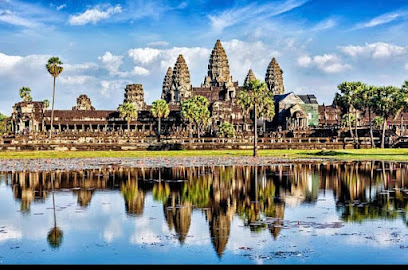
Bayon Temple
Discover the enchanting Bayon Temple in Siem Reap, Cambodia, where ancient artistry meets the serene beauty of spirituality.
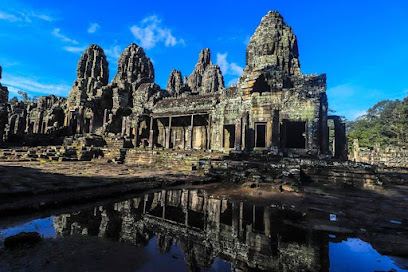
Ta Prohm Temple
Discover the enchanting Ta Prohm Temple, where ancient Khmer architecture intertwines with nature, creating a breathtaking and mystical experience.
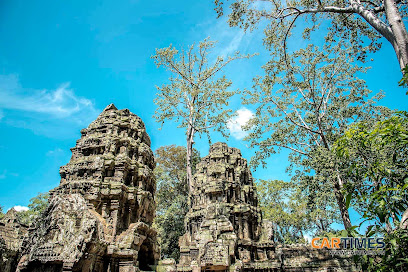
Angkor National Museum
Experience the rich heritage of Cambodia at Angkor National Museum, home to exquisite artifacts and exhibits on the Khmer Empire's glorious history.

Prasat Preah Khan
Explore Prasat Preah Khan, a stunning Buddhist temple in Siem Reap, showcasing the architectural splendor and cultural heritage of the Khmer Empire.
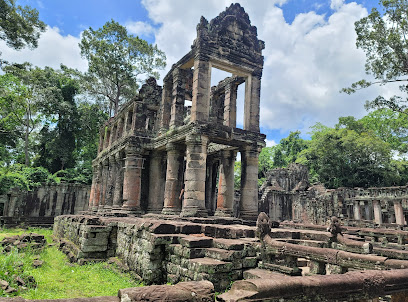
Siem Reap Shuttle Tours
Explore Cambodia's treasures with Siem Reap Shuttle Tours, the premier choice for unforgettable adventures and cultural experiences.
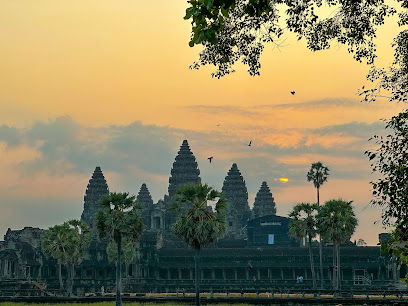
Royal Independence Gardens
Explore the lush beauty and cultural significance of the Royal Independence Gardens in Siem Reap, a tranquil escape in Cambodia's vibrant heart.
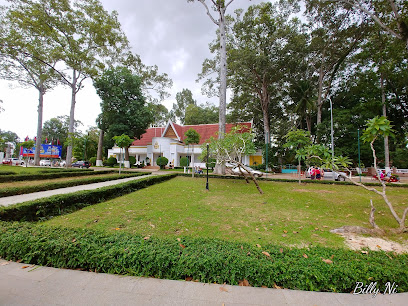
Eastern Mebon
Discover the enchanting Eastern Mebon temple, a historical gem of the Khmer Empire, rich in artistry and cultural significance.
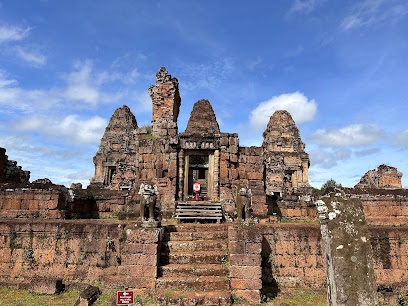
Terrace of the Elephants
Explore the enchanting Terrace of the Elephants, a historical landmark in Siem Reap, showcasing exquisite Khmer architecture and fascinating history.

Made in Cambodia Market
Explore the Made in Cambodia Market for a unique shopping experience that supports local artisans and immerses you in the rich culture of Cambodia.
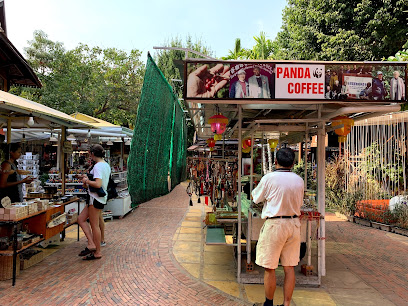
Banteay Kdei
Explore the tranquil beauty of Banteay Kdei, a historical Buddhist temple in Angkor, rich in culture and stunning architecture.
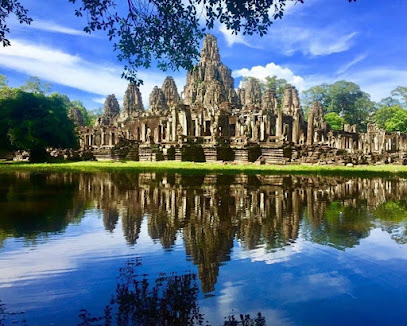
Mad Monkey Siem Reap
Experience the spirit of adventure and camaraderie at Mad Monkey Siem Reap, where travel meets community in the heart of Cambodia.
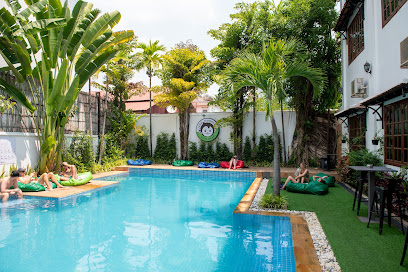
Angkor Tour Guide And Transportation
Discover the majestic Angkor Wat and its temples with expert local guides, ensuring a memorable journey through Cambodia's rich heritage.
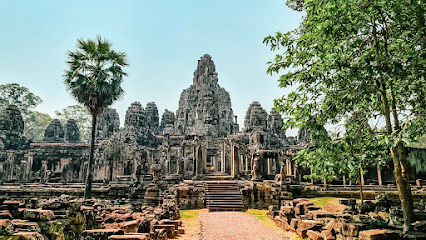
Chanrey Tree
Discover the authentic taste of Cambodia at Chanrey Tree, where traditional flavors meet a charming atmosphere in Siem Reap.

Banteay Samre
Discover Banteay Samre, a hidden gem of Khmer architecture and spirituality in Siem Reap, Cambodia, perfect for history buffs and cultural enthusiasts alike.
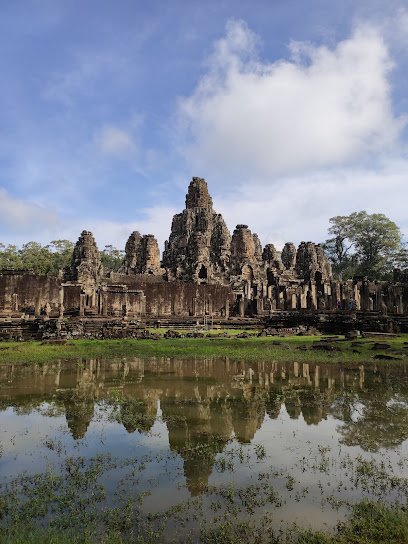
Unmissable attractions to see
Angkor Wat
Discover the breathtaking beauty of Angkor Wat, a UNESCO World Heritage Site and a pinnacle of ancient Khmer architecture in Krong Siem Reap, Cambodia.
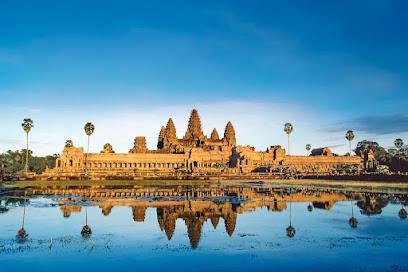
Bayon Temple
Discover the enchanting Bayon Temple in Krong Siem Reap, a mesmerizing fusion of art and spirituality with captivating stone faces and rich history.
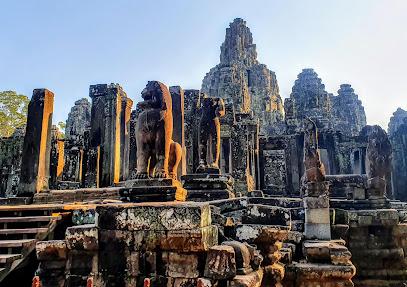
Ta Prohm Temple
Discover the enchanting Ta Prohm Temple in Krong Siem Reap, where ancient ruins and nature intertwine in breathtaking harmony.
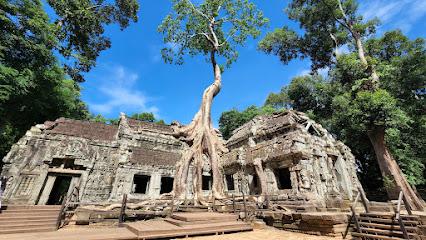
Phare, The Cambodian Circus
Experience the magic of Phare, The Cambodian Circus, where tradition meets innovation in an unforgettable performance reflecting Cambodian culture.
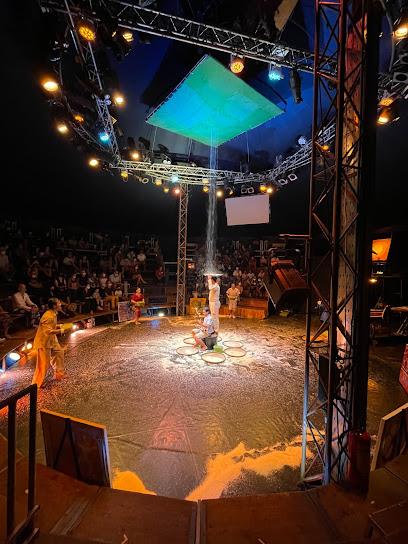
Pub Street
Discover the vibrant nightlife, diverse dining, and cultural charm of Pub Street in Siem Reap, a must-visit destination for every traveler.
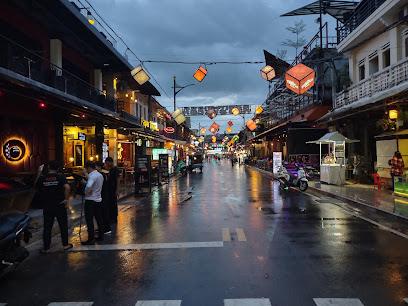
Angkor National Museum
Discover the captivating history of the Khmer Empire at Angkor National Museum, a premier cultural attraction in Siem Reap, Cambodia.

Siem Reap Art Center Night Market
Explore the Siem Reap Art Center Night Market – A vibrant blend of art, culture, and delicious Khmer street food awaits you in Cambodia.
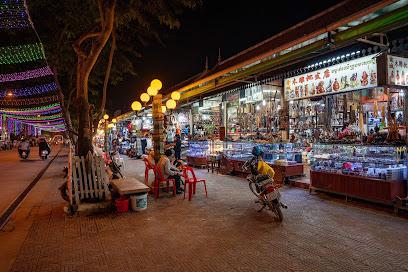
ANM Khmer Market
Experience the vibrant culture of Siem Reap at ANM Khmer Market, where local crafts, delicious food, and a lively atmosphere await every traveler.
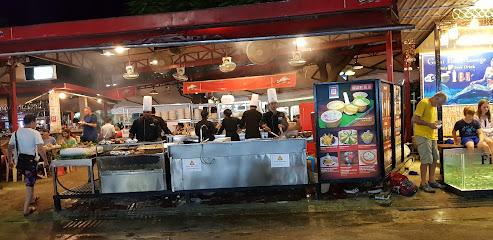
Phsar Leu Thom Tmey
Discover the authentic essence of Cambodian culture at Phsar Leu Thom Tmey, a vibrant market offering local delicacies, handcrafted goods, and a lively atmosphere.
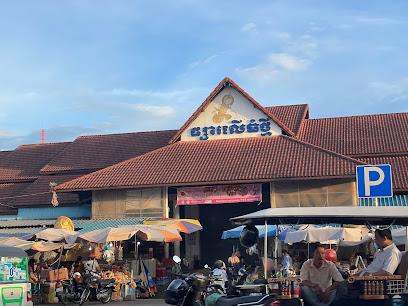
Phnom Bakheng
Explore Phnom Bakheng, a stunning ancient temple in Siem Reap offering breathtaking views and a glimpse into Khmer history.
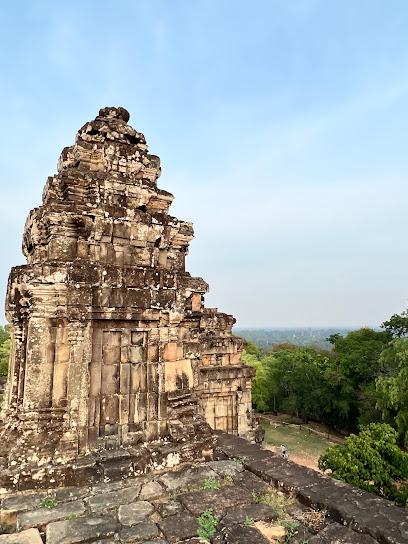
Siem Reap Shuttle Tours
Discover the beauty and culture of Siem Reap with Siem Reap Shuttle Tours, offering seamless travel experiences and memorable adventures.
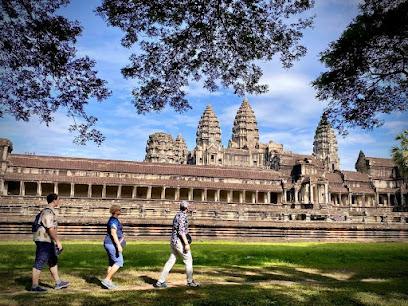
Prasat Preah Khan
Explore Prasat Preah Khan: A magnificent Buddhist temple in Siem Reap, showcasing the grandeur of Khmer architecture and rich cultural history.
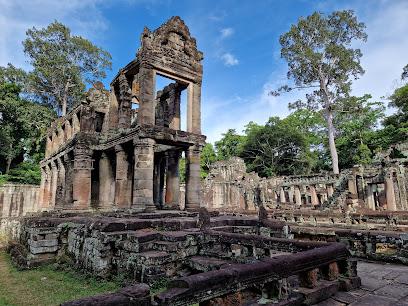
Pre Rup temple
Explore the majestic Pre Rup Temple in Angkor Archaeological Park, a historical landmark showcasing Cambodia's ancient Khmer architecture and rich cultural heritage.

Royal Independence Gardens
Explore the lush beauty and rich heritage of Royal Independence Gardens, a tranquil haven in Krong Siem Reap, Cambodia.
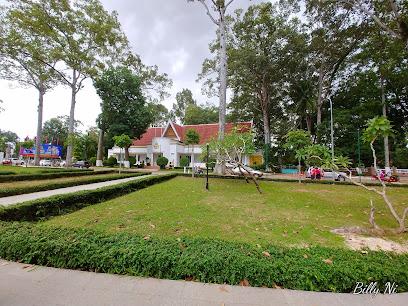
Artisans Angkor
Explore the beauty of Cambodian craftsmanship at Artisans Angkor, where tradition meets artistry in the heart of Siem Reap.

Essential places to dine
Khmer Kitchen Restaurant
Experience authentic Cambodian flavors at Khmer Kitchen Restaurant in Siem Reap - a culinary journey through traditional dishes and warm hospitality.
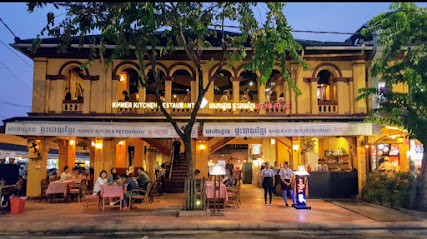
Khmer Grill
Experience authentic Cambodian flavors at Khmer Grill in Siem Reap – where tradition meets taste.
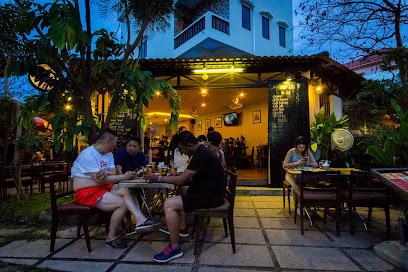
The Red Piano - Pub Street
Experience the vibrant culinary scene at The Red Piano in Siem Reap's bustling Pub Street – where flavors meet fun!
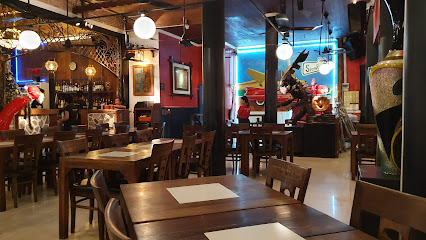
Sambo Khmer & Thai Restaurant
Experience the authentic taste of Cambodia at Sambo Khmer & Thai Restaurant - where tradition meets flavor in every dish.
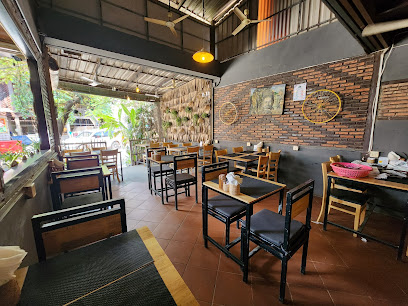
WILD - Creative Bar & Spring Rolls Restaurant
Discover innovative flavors at WILD - Creative Bar & Spring Rolls Restaurant in Siem Reap, where culinary art meets vibrant ambiance.
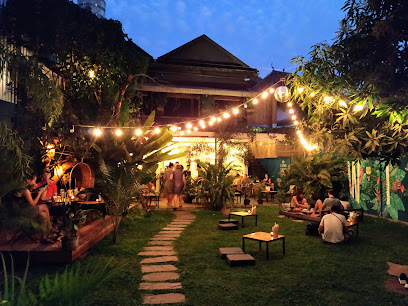
Chanrey Tree
Discover authentic Cambodian flavors at Chanrey Tree in Siem Reap—a perfect blend of tradition and taste.
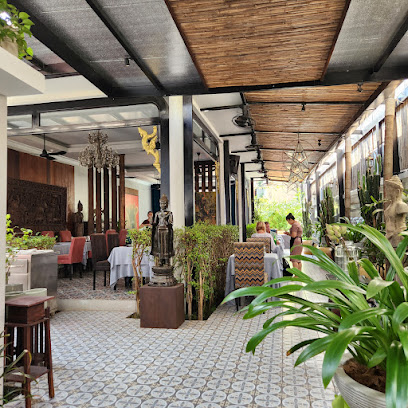
Malis Siem Reap
Experience exquisite Cambodian cuisine at Malis Siem Reap - where tradition meets modern elegance in every dish.
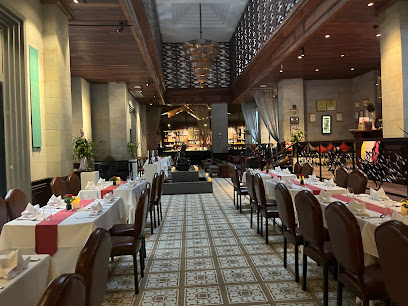
The Christa Restaurant & Bar
Experience authentic Cambodian flavors at The Christa Restaurant & Bar in Krong Siem Reap - where every meal tells a story.

Mamma Shop Italian Restaurant
Experience authentic Italian flavors at Mamma Shop in Krong Siem Reap - where delicious pasta and pizza await you!
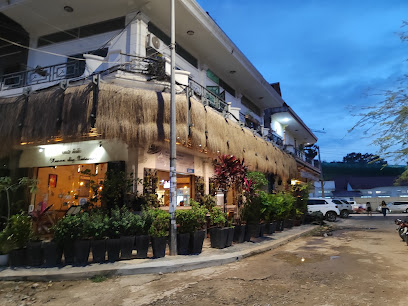
Madam Moch Khmer Restaurant
Discover authentic Cambodian flavors at Madam Moch Khmer Restaurant in Siem Reap, where every dish tells a story.
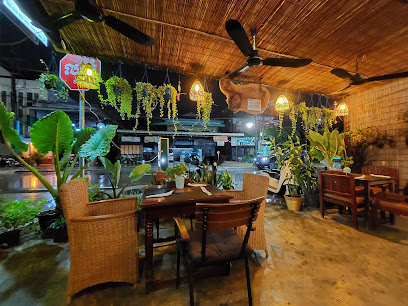
SPOONS Café & Restaurant
Experience the heart of Cambodian cuisine at SPOONS Café & Restaurant, where every meal supports local youth training initiatives.
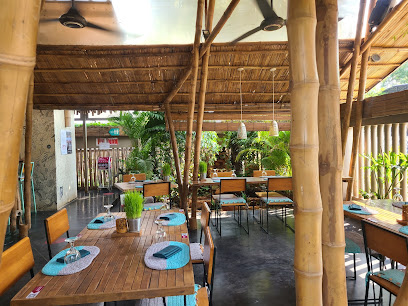
Pot & pan siem reap
Experience the vibrant flavors of Cambodia at Pot & Pan Siem Reap - A family-friendly restaurant offering delicious meals in a cozy setting.
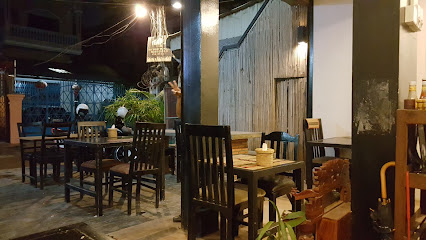
Mahob Cuisine
Experience the rich flavors of Cambodia at Mahob Cuisine – where tradition meets taste in an inviting atmosphere.
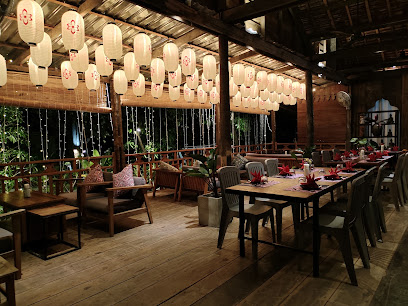
The Sugar Palm
Discover authentic Khmer cuisine at The Sugar Palm in Siem Reap - where tradition meets taste in every dish.
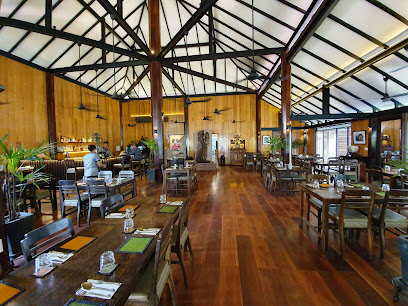
Embassy Khmer Gastronomy
Experience the essence of Cambodian cuisine at Embassy Khmer Gastronomy, where tradition meets innovation in every exquisite dish.
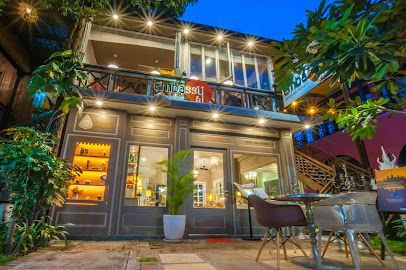
Markets, malls and hidden boutiques
Made in Cambodia Market
Explore authentic Cambodian handicrafts and support local artisans at the Made in Cambodia Market, a vibrant hub of culture and creativity.
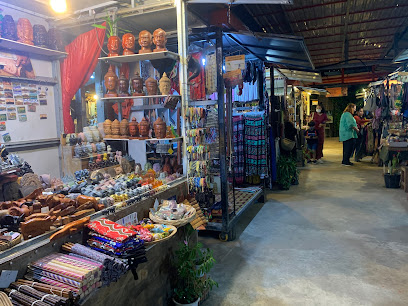
The Heritage Walk
Experience the vibrant atmosphere of The Heritage Walk, a shopping mall in Siem Reap offering diverse retail, dining options, and cultural events.
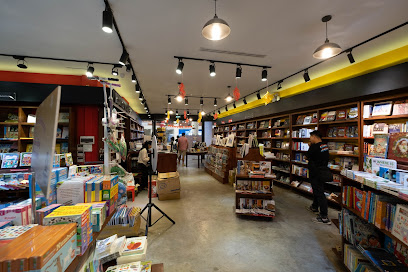
Senteurs d'Angkor (Old Market)
Discover the essence of Cambodia at Senteurs d'Angkor, a gift shop filled with handcrafted souvenirs and local delicacies.
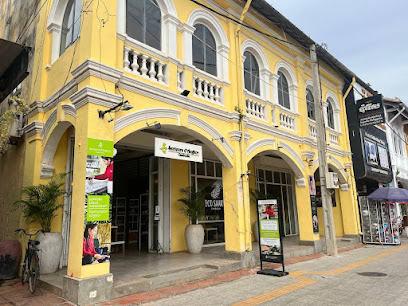
SATU Concept Store
Explore the vibrant SATU Concept Store in Krong Siem Reap for unique gifts and authentic Cambodian crafts that tell a story.
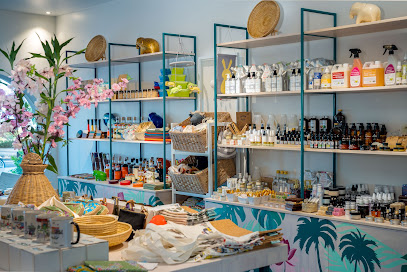
Ten11 Siem Reap
Discover stylish fashion and unique Cambodian designs at Ten11 Siem Reap, the ultimate clothing store for tourists and locals alike.
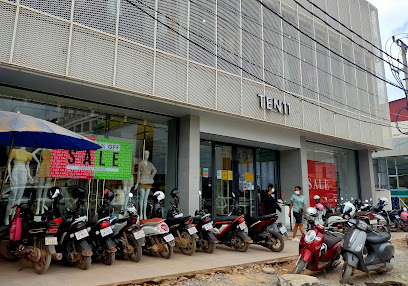
Brand INT Collection (Sivatha Road, Krong Siem Reap)
Discover a stylish blend of local and international fashion at Brand INT Collection in Krong Siem Reap, a must-visit clothing store for tourists.
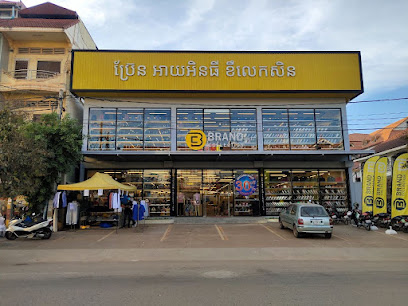
Louise Loubatieres Gallery
Explore the chic Louise Loubatieres Gallery in Krong Siem Reap for unique fashion accessories that celebrate local artistry.
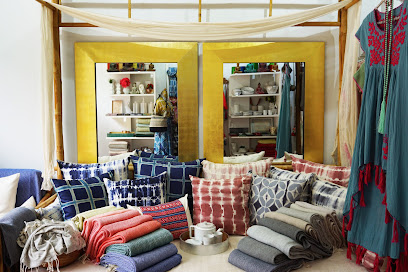
very berry
Explore Very Berry Gift Shop in Siem Reap for authentic Cambodian souvenirs and unique gifts that celebrate local craftsmanship.
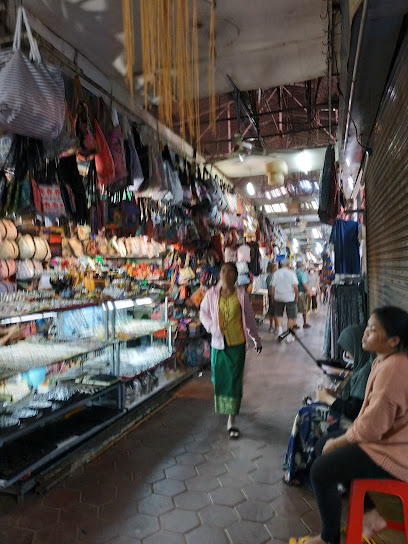
Garden of Desire (The Passage)
Explore the Garden of Desire in Siem Reap for unique gifts and handcrafted jewelry that celebrate Cambodian artistry and culture.
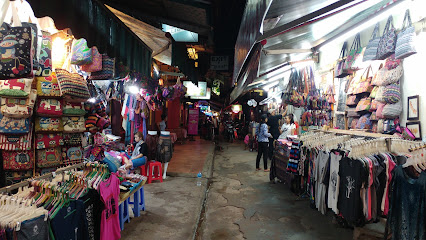
Jayav Art
Uncover the essence of Cambodia at Jayav Art, your go-to souvenir store for unique handmade crafts and cultural treasures in Siem Reap.
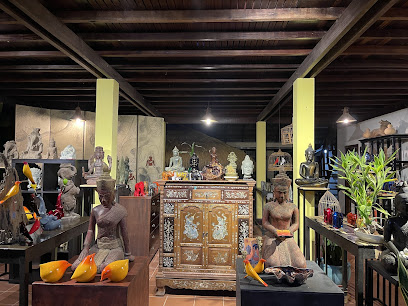
Ja
Explore Ja in Siem Reap for unique clothing and exceptional local craftsmanship, offering a truly memorable shopping experience.
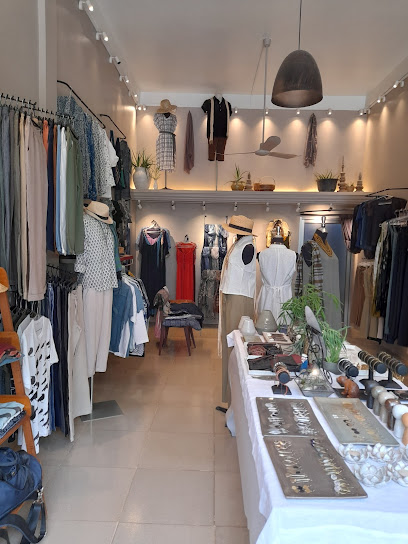
Ambre Fashion Shop by Romyda Keth
Explore a fashion oasis at Ambre Fashion Shop, where Cambodian heritage meets modern elegance in stunning couture collections.
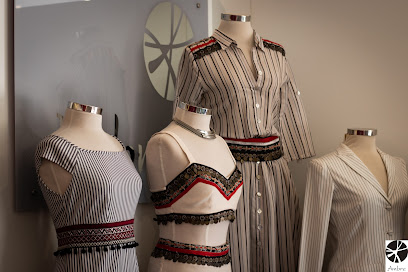
Shop 676
Discover unique clothing and handmade gifts at Shop 676 in Krong Siem Reap, where local craftsmanship meets modern style.
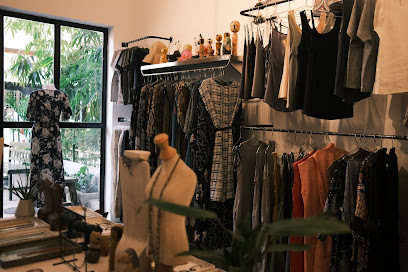
Chum Theany Angkor Souvenir Shop
Discover authentic Cambodian handicrafts and unique souvenirs at Chum Theany Angkor Souvenir Shop in Siem Reap, a treasure for every traveler.

MINISO The Heritage Walk
Explore the trendy world of fashion accessories at MINISO The Heritage Walk in Siem Reap, where quality meets affordability in a vibrant shopping atmosphere.
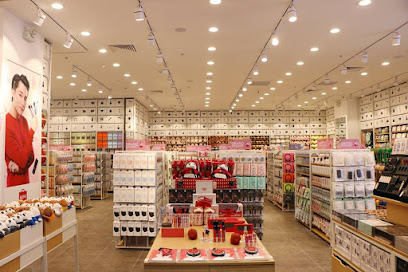
Essential bars & hidden hideouts
WILD - Creative Bar & Spring Rolls Restaurant
Experience the vibrant flavors of WILD, a unique restaurant in Siem Reap known for its creative spring rolls and inviting cocktail bar.

Miss Wong Cocktail Bar
Discover the delightful fusion of innovative cocktails and authentic dim sum at Miss Wong Cocktail Bar in Siem Reap.
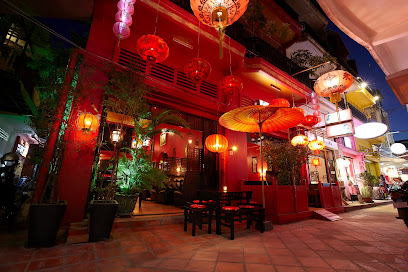
X-Bar
Experience the vibrant nightlife of Siem Reap at X-Bar, where live music and refreshing drinks create unforgettable memories.
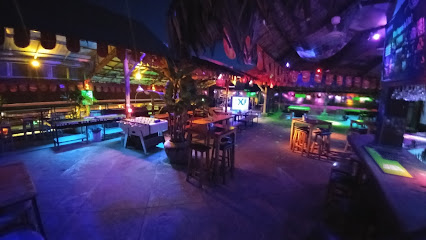
The Angkor What? Bar
Discover the vibrant nightlife at The Angkor What? Bar in Siem Reap, where fun meets affordable drinks and a lively atmosphere.
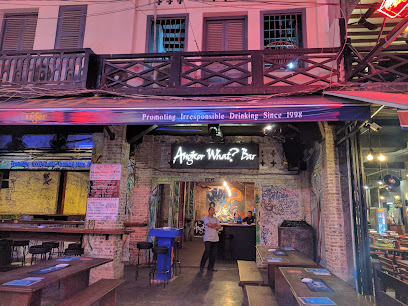
Barcode Bar Siem Reap
Discover the vibrant nightlife at Barcode Bar Siem Reap, featuring expertly crafted cocktails and a welcoming lounge atmosphere.
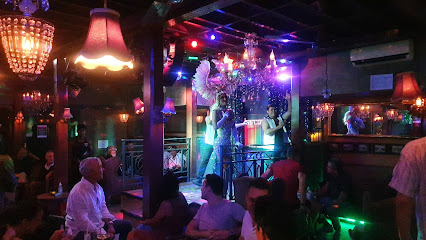
ASANA OLD WOODEN HOUSE Cocktail Bar
Discover the unique blend of cocktails and Asian cuisine at Asana Old Wooden House Cocktail Bar in Siem Reap, a cultural gem of Cambodia.
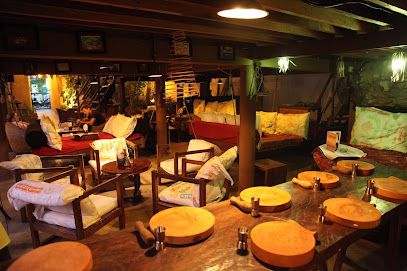
Beatnik Speakeasy
Experience the vibrant nightlife of Krong Siem Reap at Beatnik Speakeasy, where vintage charm meets innovative cocktails and live music.
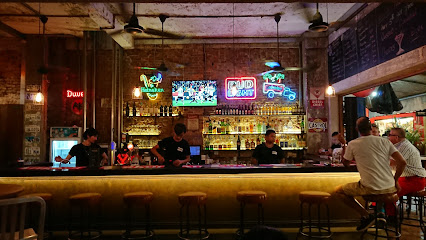
Picasso Bar
Discover the lively Picasso Bar in Siem Reap, where creative cocktails and vibrant nightlife blend for an unforgettable experience.
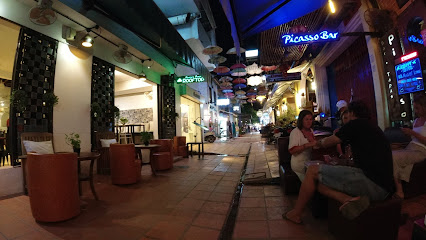
Long's Bar
Experience the vibrant nightlife of Siem Reap at Long's Bar, where delicious cocktails and local charm await in a lively atmosphere.
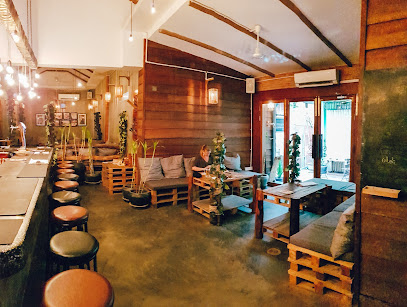
Cozy Bar
Discover the vibrant atmosphere and delightful drinks at Cozy Bar, the perfect spot to unwind in Krong Siem Reap after exploring the temples.
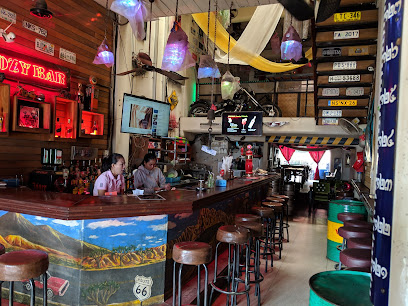
BAR43
Experience the vibrant nightlife at BAR43 in Siem Reap, known for its unique cocktails and lively atmosphere that captivates every visitor.

Charms Cambodia
Discover the vibrant nightlife at Charms Cambodia, a lively bar and disco club in the heart of Siem Reap, perfect for dancing and socializing.
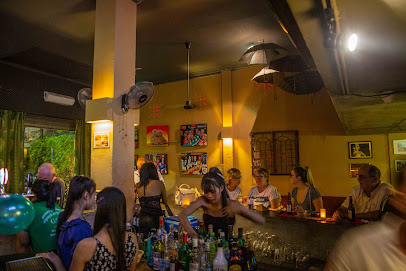
Creative Cocktails
Discover the art of mixology at Creative Cocktails, Siem Reap's premier cocktail bar, where every drink tells a story.
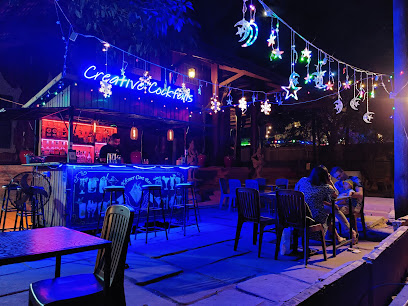
JD's Siem reap
Experience the vibrant nightlife of Siem Reap at JD's, a bar that combines great drinks, friendly service, and an unforgettable atmosphere.
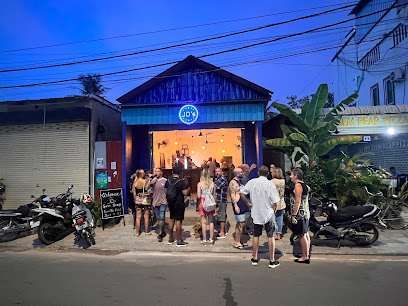
Street Cocktails Tuk Tuk PUB
Discover the lively atmosphere of Street Cocktails Tuk Tuk PUB in Siem Reap, where vibrant nightlife and delicious cocktails await every traveler.
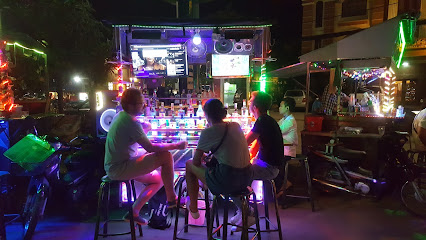
Local Phrases
-
- Helloជំរាបសួស្តី
[chom reab sour] - Goodbyeលាហើយ
[leah heuy] - Yesបាទ/ចង្វិត
[baat/chong vitt] - Noទេ
[te] - Please/You're welcomeសូម
[som] - Thank youអរគុណ
[aw kohn] - Excuse me/Sorryសូមអត់
[som ot] - How are you?អ្នកសុខសប្តីប៉ុណ្ណា?
[neak sok sabay bonnea?] - Fine. And you?សុខសប្តីប៉ុណ្ណា? អ្នកប្រសើរប៉ុណ្ណា?
[sok sabay bonnea? neak pros arn bonnea?] - Do you speak English?តើអ្នកនិយាយភាសាអង់គ្លេសទេ?
[tay neak niyeay phasa angkleh tay?] - I don't understandខុសឯងមិនយល់ទេ
[kawmern min yul te]
- Helloជំរាបសួស្តី
-
- I'd like to see the menu, pleaseខ្ញុំចង់មើលម៉ឺនុយសូម
[knhom chong muel menouy som] - I don't eat meatខ្ញុំមិនចេញហាងដូប
[knhom min cheang haang dop] - Cheers!អមស្រ្តី!
[aum srotey] - I would like to pay, pleaseខ្ញុំចង់បង់លុយសូម
[knhom chong bong leu som]
- I'd like to see the menu, pleaseខ្ញុំចង់មើលម៉ឺនុយសូម
-
- Help!ជម្រើសិប!
[chamrahsab] - Go away!លាហើយ!
[leah heuy] - Call the Police!ហៅលេខបង្កើត!
[haw lek bangkeat] - Call a doctor!ហៅវេជ្ជបណ្ឌុន!
[haw vejjabandun] - I'm lostខ្ញុំភ្លើ
[knhom phleah] - I'm illខ្ញុំឈឺ
[knhom chhae]
- Help!ជម្រើសិប!
-
- I'd like to buy...ខ្ញុំចង់ទិញ...
[knhom chong teun...] - I'm just lookingខ្ញុំតែងរកបញ្ចូល
[knhom thaeng rok bangchol] - How much is it?តើវ៉ែប្រមូលប៉ុន្មាន?
[tay way bra mul bonman?] - That's too expensiveវ៉ែនានពេលចោលពេក
[way nan pear choul pheak] - Can you lower the price?តើអ្នកអាករបញ្ចូលតម្លៃបានទេ?
[tay neak akar bangchol tamle bon te?]
- I'd like to buy...ខ្ញុំចង់ទិញ...
-
- What time is it?ម៉ោងណា?
[maong na?] - It's one o'clockវ៉ែមួយ
[way muoy] - Half past (10)ខួបបួរ (១០)
[khub buel (sip)] - Morningព្រឹក
[preuk] - Afternoonល្ងាច
[lingcha] - Eveningយប់
[yop] - Yesterdayម្សិល
[msil] - Todayថ្ងៃនេះ
[tang ney] - Tomorrowថ្ងៃស្អែក
[tang saek] - 1១
[mouy] - 2២
[pii] - 3៣
[bei] - 4៤
[bei] - 5៥
[pram] - 6៦
[pram] - 7៧
[pram] - 8៨
[pram] - 9៩
[pram] - 10១០
[dop]
- What time is it?ម៉ោងណា?
-
- Where's a/the...?មានទីតា/មើលម៉ឺនុយនៅណា?
[mean teat/muel menouy nov na?] - What's the address?អាសយដ្ឋាននៅណា?
[asayatan nov na?] - Can you show me (on the map)?តើអ្នកបង្ហាញខ្ញុំ(លើផែនទី)?
[tay neak banghaanh knhom (leapet)?] - When's the next (bus)?នៅម៉ោងណាហើយ(រថយន្ត)?
[nov maong naheuy (rothear teat)?] - A ticket (to ....)សំបុត្រ(ទៅ....)
[sombot (tov....)]
- Where's a/the...?មានទីតា/មើលម៉ឺនុយនៅណា?
History of Siem Reap
-
Siem Reap's history dates back to the early 9th century when it was part of the Khmer Empire. The city’s name means 'Defeat of Siam,' a reference to the Khmer victory over Thai forces in the 17th century. It was initially a small village, but its proximity to the ancient capital of Angkor made it historically significant.
-
The city of Siem Reap is most famous for its proximity to Angkor, the seat of the Khmer Empire from the 9th to the 15th centuries. Angkor was one of the largest pre-industrial cities in the world, and its architectural marvels like Angkor Wat, Bayon, and Ta Prohm are renowned for their grandeur and intricate details. Angkor Wat, built in the early 12th century by King Suryavarman II, remains the largest religious monument in the world.
-
In the mid-19th century, French explorers Henri Mouhot and others brought the wonders of Angkor to the attention of the Western world. By 1907, Siem Reap fell under French colonial rule. The French influence is still evident in some of the city's architecture and urban planning, blending with traditional Khmer styles. During this period, significant restoration work began on the Angkor temples.
-
The latter half of the 20th century was tumultuous for Siem Reap. The Cambodian Civil War and the brutal Khmer Rouge regime from 1975 to 1979 led to significant suffering and loss of life. Many historical sites were neglected or damaged during this period. However, the resilience of the Cambodian people has seen Siem Reap and its historical treasures gradually restored.
-
In recent decades, Siem Reap has transformed into a bustling tourist hub, thanks to its historical significance and the global fascination with Angkor. The city now boasts a range of accommodations, from budget hostels to luxury hotels, and a vibrant cultural scene with night markets, traditional dance performances, and a burgeoning food scene. Efforts continue to balance tourism with the preservation of Siem Reap's rich heritage.
Siem Reap Essentials
-
Siem Reap has an international airport, Siem Reap International Airport (REP), which is the primary gateway for most international travelers. Direct flights are available from major cities in Asia, including Bangkok, Singapore, and Kuala Lumpur. From the airport, the city center is approximately a 15-minute drive. Taxis and tuk-tuks are readily available for transportation to your accommodation. Alternatively, travelers can reach Siem Reap by bus from Phnom Penh or other Cambodian cities, with several bus companies operating daily services.
-
Siem Reap is a relatively small city, and many attractions are within walking distance. Tuk-tuks are the most popular mode of transportation for tourists, providing a convenient and affordable way to get around the city. For a more comfortable ride, taxis and ride-hailing services like Grab are also available. Bicycles and motorbikes can be rented from various shops for those who prefer to explore at their own pace. For longer trips, private car hires and guided tours can be arranged through hotels or travel agencies.
-
The official currency in Cambodia is the Cambodian Riel (KHR), but US Dollars are widely accepted and often preferred for larger transactions. ATMs dispensing both Riel and US Dollars are readily available throughout Siem Reap. Credit cards are accepted in most hotels, restaurants, and larger shops, but smaller establishments and markets may only accept cash. It is advisable to carry small denominations of both currencies for convenience.
-
Siem Reap is generally a safe destination for tourists, but it is important to exercise caution. Petty crimes like pickpocketing and bag snatching can occur, especially in crowded areas such as Pub Street and the night markets. Avoid walking alone at night in poorly lit areas. Always keep an eye on your belongings and use hotel safes to store valuables. Be cautious when using ATMs and avoid displaying large amounts of cash.
-
In case of emergency, dial 117 for police assistance, 118 for fire services, and 119 for medical emergencies. Siem Reap has several hospitals and clinics, including the Royal Angkor International Hospital and Angkor Hospital for Children. It is recommended to have travel insurance that covers medical emergencies. Pharmacies are available throughout the city for minor health issues and over-the-counter medications.
-
Fashion: Do dress modestly, especially when visiting temples and religious sites. Avoid wearing revealing clothing. Religion: Do show respect for local customs and traditions. Always remove your shoes and hats when entering temples. Public Transport: Do be polite and considerate. Negotiate fares with tuk-tuk drivers before starting your journey. Greetings: Do greet people with a traditional Cambodian greeting, the 'sampeah,' by placing your palms together in a prayer-like gesture. Eating & Drinking: Do try local dishes and street food, but be cautious with food hygiene. Drink bottled water instead of tap water.
-
To experience Siem Reap like a local, visit the Old Market (Psar Chaa) for fresh produce, local snacks, and souvenirs. Engage with locals, as they are often friendly and willing to share insights about their culture and traditions. Don't miss the opportunity to attend a traditional Apsara dance performance. For a unique experience, take a boat trip on Tonle Sap Lake to visit the floating villages. Exploring the lesser-known temples around Angkor Wat can provide a more serene and intimate experience away from the crowds.
Trending Landmark in Siem Reap
Nearby Cities to Siem Reap
-
Things To Do in Battambang
-
Things To Do in Trat
-
Things To Do in Koh Kong
-
Things To Do in Phnom Penh
-
Things To Do in Ubon Ratchathani
-
Things To Do in Kratie
-
Things To Do in Nakhon Ratchasima
-
Things To Do in Champasak
-
Things To Do in Pakse
-
Things To Do in Rayong
-
Things To Do in Sihanoukville
-
Things To Do in Koh Rong
-
Things To Do in Kampot
-
Things To Do in Kep
-
Things To Do in Pattaya

















